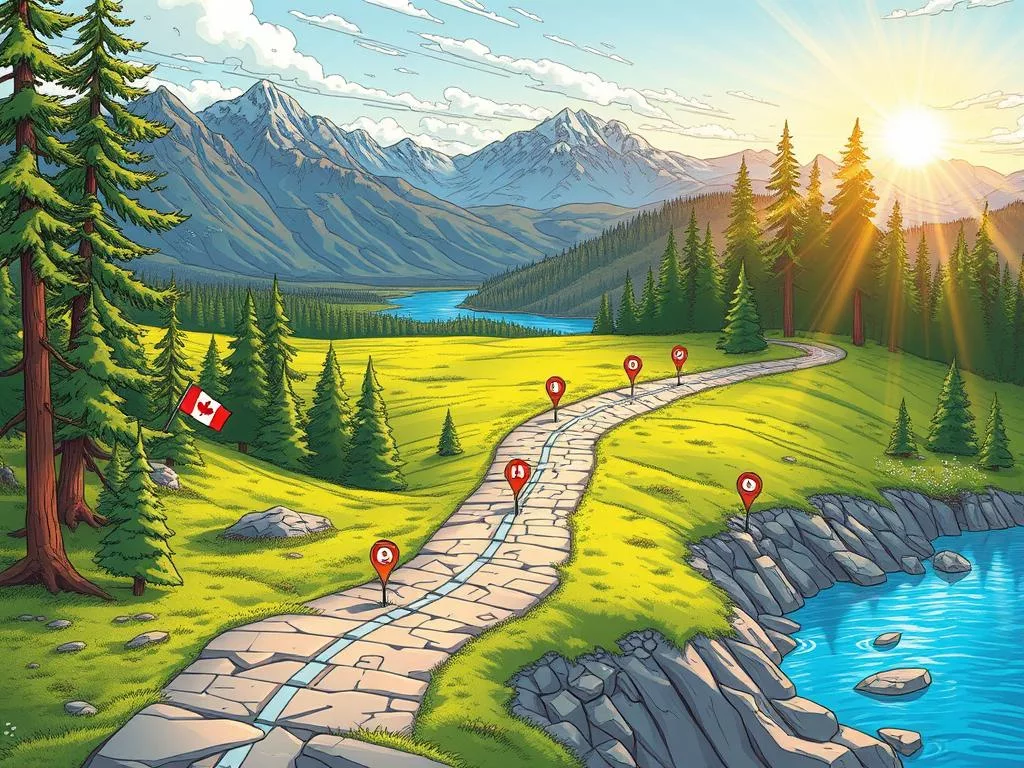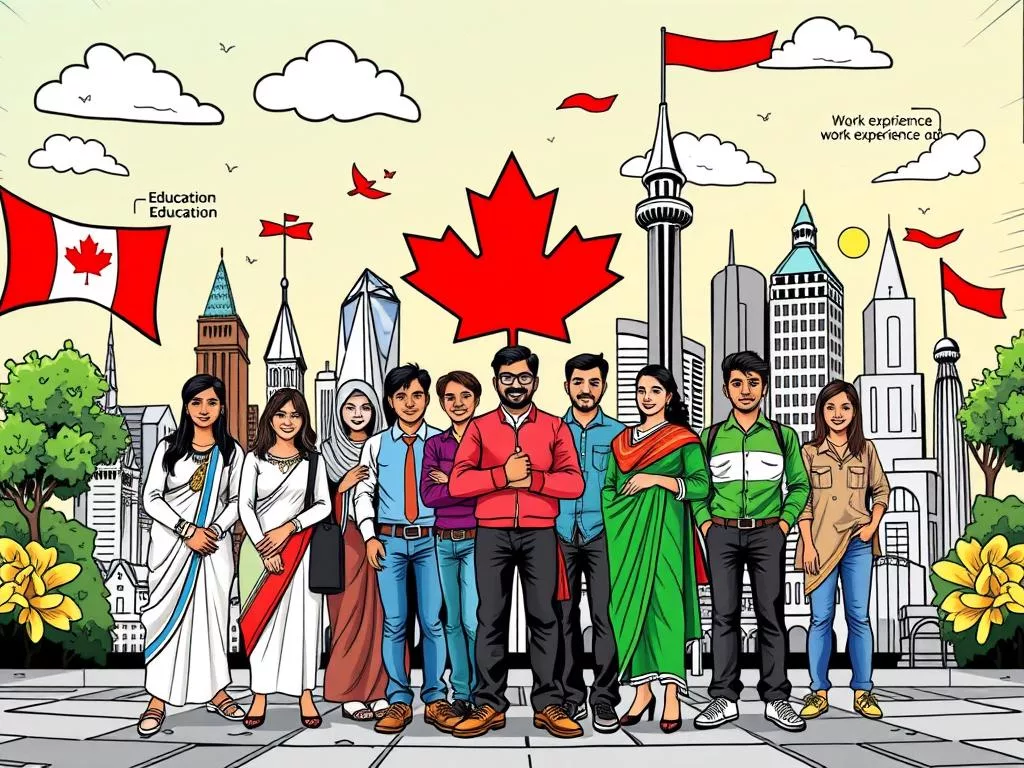Canada is open to people from all over, and Indians are a big part of its new residents. In 2022, 118,095 Indians became permanent residents, a big jump from 32,828 in 2013. This guide aims to help those moving to Canada from India with key tips.
Canada is known for its friendly vibe, job opportunities, high standard of living, and great healthcare. Its diverse culture also makes it easy to find a community that fits. It’s important to understand Canada’s economy and society before moving.
One of the first hurdles is getting used to Canada’s different weather. International students pay around CAD $36,123 a year for tuition, and living costs are about $12,869 annually. With over 280 schools, Canada has many educational options. SparrowLiving offers affordable rooms and basements with flexible leases to help newcomers.
After arriving, getting to know essential services is key. Newcomers should get a Social Insurance Number (SIN) from Service Canada. Programs like Scotiabank’s StartRight™ support newcomers, and language classes improve English or French skills. The True North newsletter also helps with career and life advice, making the move easier.
Choosing the Right Immigration Pathway
Canada has many immigration paths for different people, like skilled workers, entrepreneurs, and those wanting to be with family. For Indians, the top choices are the Express Entry system, Provincial Nominee Programs (PNP), and family sponsorship.

The Express Entry system is fast and popular for skilled workers. Your age, education, work history, and language skills matter a lot. You also need to show your education is the same as in Canada and pass language tests like IELTS or TEF.
Most programs, like Express Entry, need at least a year of work in a skilled job. You also need to show you can support yourself and your family when you first arrive. The amount you need depends on your family size and the program you choose.
The Provincial Nominee Program (PNP) lets provinces choose immigrants who fit their needs. Each province has its own PNP with different rules and application processes. With 13 provinces and territories, the PNP is a great choice for Indians moving to Canada.
Canada family sponsorship is key for family reunions. It lets Canadians and permanent residents bring in relatives like spouses, children, parents, and grandparents. There are different types, like spousal and dependent child sponsorship.
How long it takes to process your application depends on the program, where you’re from, and how many applications there are. You’ll need to do medical checks and security screenings. Once approved, you’ll get a Permanent Resident Visa or Confirmation of Permanent Residence, making you a permanent resident in Canada.
| Immigration Pathway | Key Requirements | Processing Time |
|---|---|---|
| Express Entry | Age, education, work experience, language proficiency, proof of funds | Varies (usually 6 months) |
| Provincial Nominee Program | Specific to each province, often aligned with labor market needs | Varies by province |
| Canada Family Sponsorship | Relationship proof, financial support, sponsorship agreement | Varies (typically 12 months) |
Choosing the right immigration path is key for a successful move to Canada. Think about each option’s needs and your own situation. This can help make your move smoother and more successful.
Meeting Eligibility Requirements
To move to Canada, you must meet certain eligibility criteria. This includes your education, work history, financial status, and language skills. Canada plans to welcome 485,000 new immigrants in 2024. So, it’s important to know what’s needed.
For degrees earned outside Canada, you need an Educational Credential Assessment (ECA). This ensures your education meets Canadian standards. It’s key for the Federal Skilled Worker Program (FSWP), which needs at least 67 points out of 100.
Your work experience is also checked. This is done using National Occupational Classification (NOC) codes. They help prove you have Canadian work experience.
The CRS system ranks candidates based on age, education, work experience, and language skills. For the Federal Skilled Worker Program, you need at least one year of work in a skilled job. The Canadian Experience Class (CEC) requires 12 months of work in Canada. The Federal Skilled Trades Program (FSTP) needs two years of skilled trade work in the last five years.

Language tests, like IELTS (English) or TEF (French), are needed for most paths. You need a CLB 7 level for permanent residence. These tests check if you can speak one of Canada’s official languages.
Having enough money is also important. You must show you can support yourself and your family in Canada. The amount needed depends on your family size. You also need to pass medical tests and get a police clearance certificate. These are part of the immigration eligibility criteria.
| Program | Minimum Requirements | Additional Criteria |
|---|---|---|
| Federal Skilled Worker Program (FSWP) | 67 points out of 100 | 1 year of continuous, full-time paid work experience in a skilled occupation (NOC TEER 0, 1, 2, or 3) |
| Canadian Experience Class (CEC) | 12 months of skilled work experience in Canada within the past 3 years | Minimum CLB 7 in language proficiency tests |
| Federal Skilled Trades Program (FSTP) | 2 years of work experience in a skilled trade within the last 5 years | Professional certification may be required |
| Provincial Nominee Programs (PNPs) | Varies by province | Additional benefits offered in different provinces |
The Provincial Nominee Programs (PNPs) are a great way to get permanent residency. They are popular among Indian applicants. These programs let provinces choose people who fit their local job needs. So, knowing and meeting these requirements can really help you get Canadian permanent residency.
Guide to moving to Canada from India
Starting a new life in Canada requires careful planning and following important steps. This guide will help Indians moving to Canada with a detailed checklist.
First, learn about the Canadian visa process. Look into the Federal Skilled Worker Program (FSWP) and Provincial Nominee Program (PNP). Also, consider Express Entry for skilled workers, as it’s quicker.
When moving, use reliable services like Wise and Currencies Direct for money transfers. This saves you from high fees. Setting up a bank account in Canada is also easier with well-known banks.
Education is key. The cost for higher education in Canada can be between CAD 9.31 lakhs and 12.42 lakhs for Indian students. Researching schools and the education system will help your family adjust. Top Indian banks offer loans up to INR 1 crore for education.
Here’s a quick look at monthly costs:
- Accommodation: CAD 400 to 500
- Food and grocery: CAD 200 to 300
- Transportation: CAD 100 to 250
- Internet: CAD 30 to 50
- Miscellaneous: CAD 600 to 700
Remember, the Canada student visa application costs about CAD 150. Getting part-time jobs can help with living expenses, earning up to CAD 300-400 a week.
Getting to know Canadian culture is important. Look into community resources and government programs for integration. Learning customs and joining local Indian groups will make your move easier.
Financial planning is vital. Open a Canadian bank account, understand taxes, and keep track of your money. Students can also get tax refunds, averaging CAD 998, and access benefits like the GST/HST credit.
After arriving, focus on your well-being. Build a support network, enjoy hobbies, and seek help when needed. This will help you settle into your new life in Canada.
Preparing for Life in Canada
As you get ready to settle in Canada, learning about the Canadian lifestyle is key. You’ll need to get used to the country’s different climates. Quebec has cold, snowy winters, while British Columbia has mild, rainy seasons.
Joining in local customs, like Thanksgiving dinners, can make your experience richer. It also helps you connect with the community.
Understanding public transportation is vital. Cities like Toronto and Vancouver have good bus, train, and streetcar systems. Knowing how to use transit passes and regional differences is important.
Vancouver’s Compass Card, for example, makes traveling easy across different modes of transport.
Getting to know public services is also important. Opening a bank account can be done from the US, as shown in this guide. Health insurance is usually provided by the province, and setting up phone and internet plans is essential.
For families, understanding the education system is critical. You’ll need to provide documents like educational credential assessments (ECAs) from places like World Education Services (WES) Canada. Job seekers should also learn about the job market and required certifications.
Canada values diversity and has a wide range of job opportunities. This makes it easier to find work that fits your skills.

